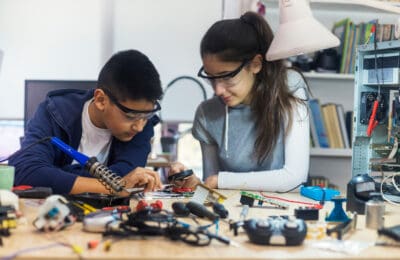Toward Inclusive Regional Economies
The Regional K-16 Education Collaboratives Grant Program offers a unique opportunity to expand on California’s strong history of regional college and career pathway innovations in service of a broader set of priorities for equitable economic recovery, but this investment is time limited. We urge leaders not to downplay the program’s connections with the goals of other regional investments, including CERF, the Strong Workforce Program, Golden State Pathways, and dual-enrollment programs, and to seize the chance to be intentional about the inclusive processes needed to produce real equitable outcomes.
The investment’s combination of state-level direction and regional flexibility is already spurring innovative approaches to prioritizing the inclusion of student and community voices as a way to create more inclusive economies. This type of work—building sustainable systems—is complex, and leaders are eager to learn and apply best practices and gain opportunities for field-building as they confront similar challenges across the state. Authentic inclusion ultimately requires trust, and with shifting collaborative dynamics and geographical boundaries, regions will need to rapidly determine the who, what, and how as inclusive design is advanced through new collaborative structures.
We are eager to continue these types of peer learning exchanges, where participants can spotlight emerging innovations and share cross-cutting lessons. Working through tough questions ensures that these investments are not Band-Aid solutions and that they address the core systems change that is needed. Critically, through these learning spaces, state leadership can reflect alongside practitioner leaders to ensure that investments and policies are keeping pace with local innovations. The regional innovations afforded through investments such as the Regional K-16 Education Collaboratives Grant Program will help all of us reduce regional disparities and create more inclusive and prosperous economies. That is the promise of real change, from cradle to career.



